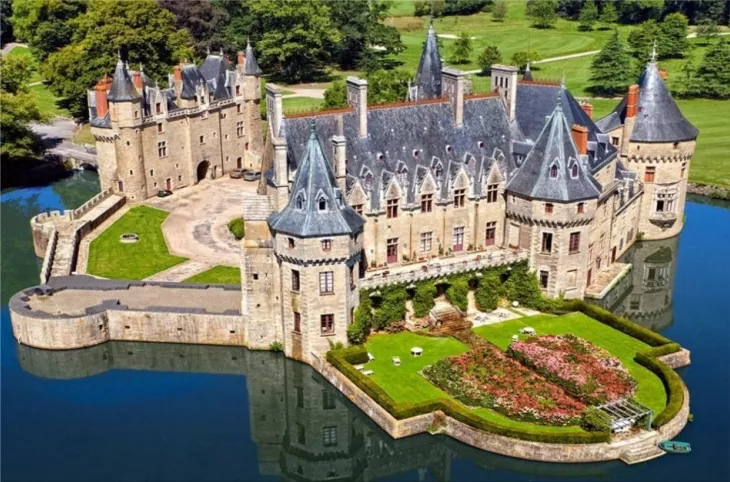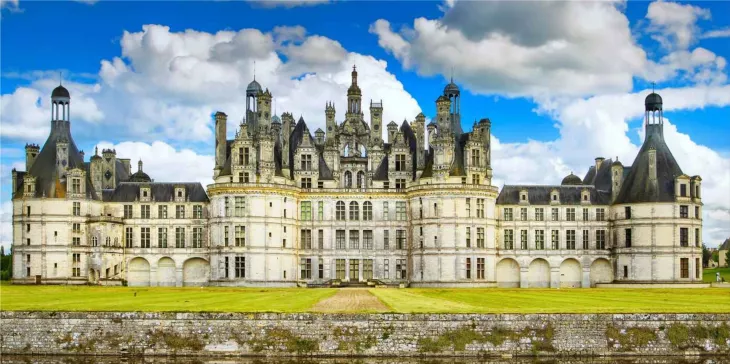A decade has passed since the Loire Valley entered the invaluable heritage of humanity, with all its castles and histories. The memory of France's longest river competes only with the memory of the people who lived, loved, built, fought, and loved again on its shores. From the stunning gardens of Villandry to the double Davincian staircase at Chambord, from the shady statues of Lude to the shadows of the celluloid musketeers of Chaumont, from the hunting stories of Cheverny to those of love, intrigue, jealousy from Chenonceau. The Loire Valley is a diamond with a thousand faces.
The history of the castles in the Loire Valley is very long. Still, the best known of its monuments are related to the presence on the river banks of the House of Valois, a dynasty that begins in 1328 with Philip VI and ends in 1589, once with the death of Henry III, son of Catherine de Medicis.
For a time, at the beginning of the fourteenth century, when the Civil war, dolphins, and kings ravaged Paris, heroes and strategists took refuge in the castles on the great river banks.
In her short destiny, the heroine, raised to the rank of knight in Melun-sur-Yevre, lived for a short time at the Castle of Sully-sur-Loire (winter 1429-1430), from here starting in her last assault, before she was captured. Remaining in the same era of Charles VII, let us note that the keep in Loches was offered as the residence of one of the beautiful times, the king's favorite, Agnes Sorrel. The most famous (today) cook of the Middle Ages, Guillaume Taillevent himself, cooked for the Castilian woman from Loches. They left posterity the first manuscript with culinary recipes written in French.
In the course of history, as in the water, castles and their astonishing stories follow one another. Amboise, for example, links his name to Louis (11th and 12th), to Charles VIII (who enriches him with rare furniture and tapestries), but especially to Francis I, Catherine's father-in-law. Medicis brings Leonardo da Vinci from Italy and installs him in the castle above at Clos-Lucé. Until today, I would realize that passing through Amboise, the city inhabitants tell of their famous neighbor, "the painter Leon" from the hill. I mean Leonardo Da Vinci.
The tremendous architectural successes of the French Renaissance at the beginning of the 16th century are linked to the name of Francis I. He enriches Blois and Amboise and, for the sake of his younger mistress, Diana de Poitier (who would later be the mistress of his son, Henry II), renovates Chenonceau, the beautiful castle thrown over the water of the Cher River. He also embarked on the gigantic project of Chambord Castle, which the chroniclers of the time called the palace-fortress. The central pavilion, called the "dungeon," is cut by two cross galleries, which delimit four apartments on each floor. However, what amazes Chambord is the double-spiral staircase - like the DNA chain, I would say today - created by Leonardo da Vinci, especially for this project. Chambord e was a giant castle, but the king only came here to hunt. For a long time, even the presidents of France also used it as a hunting lodge, and sometimes exhibitions and symposia with hunting themes are organized here.
Many of the castles in the Loire Valley remained the property of the heirs of the old families. However, some of them entered the state administration, such as Azay-le-Rideau, in 1905, Chambord, in 1930, Talcy, in 1933, Chaumont in 1938. However, they have been listed as UNESCO heritage for a decade invaluable values of humanity.


















